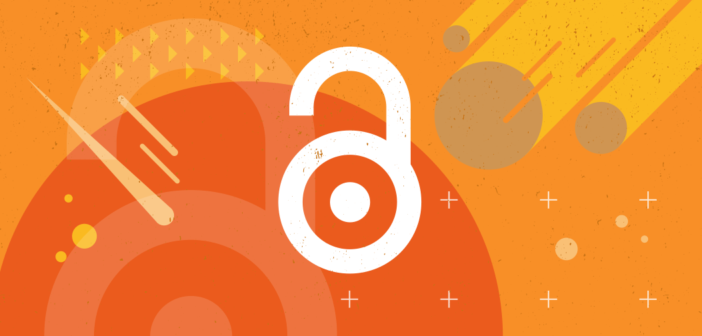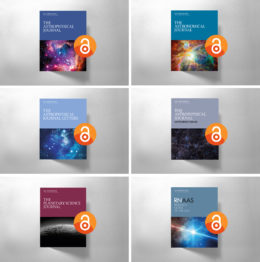We usually don’t put exclamation points in titles around here, but we’re really excited about this one. As of 1 January 2022, all AAS journals will officially be open access (OA) — which means that anyone can read, download, and share the content in them with no subscription charge. We think this is a huge and important step in our efforts to increase equity and the sharing of knowledge in astronomy, and we hope that you agree!
For the full details about this change, you can read our press release and our detailed FAQ. And if you’re new to the world of academic publishing, check out CfA/AAS Innovation Scientist Peter Williams’s excellent — and honest — summary of the scene and how AAS’s move to OA fits in.
Here, we’ll just briefly outline this transition and a few of its implications so you can see how this might impact you as a member of the astronomy community.
Wait, What’s Happening?
After 1 January 2022, all AAS journals will transition to an open access model. This means no more subscriptions, paywalls, or access control on any past, present, or future AAS journals content after 31 December 2021.
The transition will apply to the Astronomical Journal (AJ), the Astrophysical Journal (ApJ), Astrophysical Journal Letters (ApJL), and the Astrophysical Journal Supplement Series (ApJS); the Planetary Science Journal (PSJ) and Research Notes of the AAS (RNAAS) are both already open access.
A Little Background on the Business
Until recently, most scholarly journals have been 100% supported by institutional subscriptions: institutes pay so their researchers can read articles in the journals. This model has the benefit of allowing authors to publish without charge — but it has the significant downside of limiting who is able to see that research.
AAS has relied for decades on a hybrid model, in which ~1/3 of journal revenue comes from institutional subscriptions and ~2/3 from article publication charges. This helps distribute the financial burden better and reduces the time that articles are paywalled (only 12 months after publication).
The move to fully open access — in which article publication charges will represent 100% of the support for the journals — takes this a step further. Under an open access model, no amount of the financial burden falls to the reader, and anyone is able to see the research in AAS journals immediately upon publication.
Hang On, What About the Authors?
At this point, you may be wondering: We’re removing the barrier to accessing the research in our journals — but doesn’t this just introduce a new barrier to publishing it?
We want to avoid that, which is why we’ve introduced a significantly expanded waiver budget into our new pricing model. Authors who don’t have the funds to publish with us can apply for a waiver of article publication charges, and the Editor in Chief can authorize waivers based on need.
That said, authors who do have the funds to publish with us are expected to pull their weight! We did our best to get the costs as low as possible while still covering the loss of subscription revenue and the increased waiver budget. We hope that the community will see this transition to OA as a positive move toward increased inclusivity, and that those who can afford it will continue to step up — as they’ve already done for decades — to pay their share and help ensure that anyone who wants to submit to AAS journals can, regardless of financial situation.
What This Transition Means for You
If you’re an amateur astronomer or enthusiast, this change should give you the freedom to more easily pursue your interests. Ever been annoyed when you’ve followed the link to a really awesome-sounding article and gotten stuck at a paywall? That won’t happen with us anymore. After 1 January 2022, be ready to dive into any exciting astronomy that catches your eye.
If you’re a researcher who publishes with AAS journals, know that after 1 January 2022, your article will be immediately available for anyone in the world to read. Page charges will likely be a little higher, but that money’s going toward making science an inclusive and open enterprise. And our data shows that, statistically, your open-access work will be even more likely to be cited and downloaded, which is a nice perk.
And if you’re a researcher who doesn’t publish with AAS journals, well — what better time to start?
Ultimately, the upcoming transition to our new model won’t change the high-quality research published in the AAS journals. It just removes the barriers to who can create, discover, share, and build on that research — in short, who can participate in astronomy. And that’s an outcome we hope everyone can be excited about.


